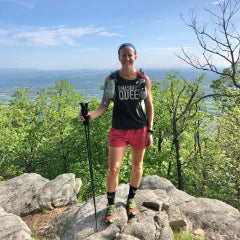Love these shoes. Finally someone came up with a locking heal and wider toe box cushioned winter running shoe. I have put about 50 miles so raf and love them. I’m in Alaska and my feet are almost hot in these. Never been cold. Great shoe, really appreciate your effort!
I wore these shoes to run the Spartan Race Trifecta weekend in Central Florida. They held up really well. And I've gotten a couple compliments on how nice they looked. One thing that I noticed is they didn't have any grippiness when trying to climb near-vertical walls; I was expecting my feet to stick to the walls but they would just slide down. It could be because of the mud or water.
I have used these shoes for a 50k trail race and a 100 mile trail race, as well as daily training. They are fantastic in almost all aspects. The grip is amazing on all types of terrain. They drain well and dry quickly. They feel great on my feet and strike a good balance between great cushioning and responsiveness over long distances. However, they cause severe blisters on both heels. The material that VJ has used here is a little on the sticky side and this creates a lot of friction in the heel area. I love everything else about the shoe, so I put multiple layers of KT tape on my heels just to be able to run in them. VJ, if you can fix this you will have 5 star shoes for sure, something that can be used anywhere and any distance.


